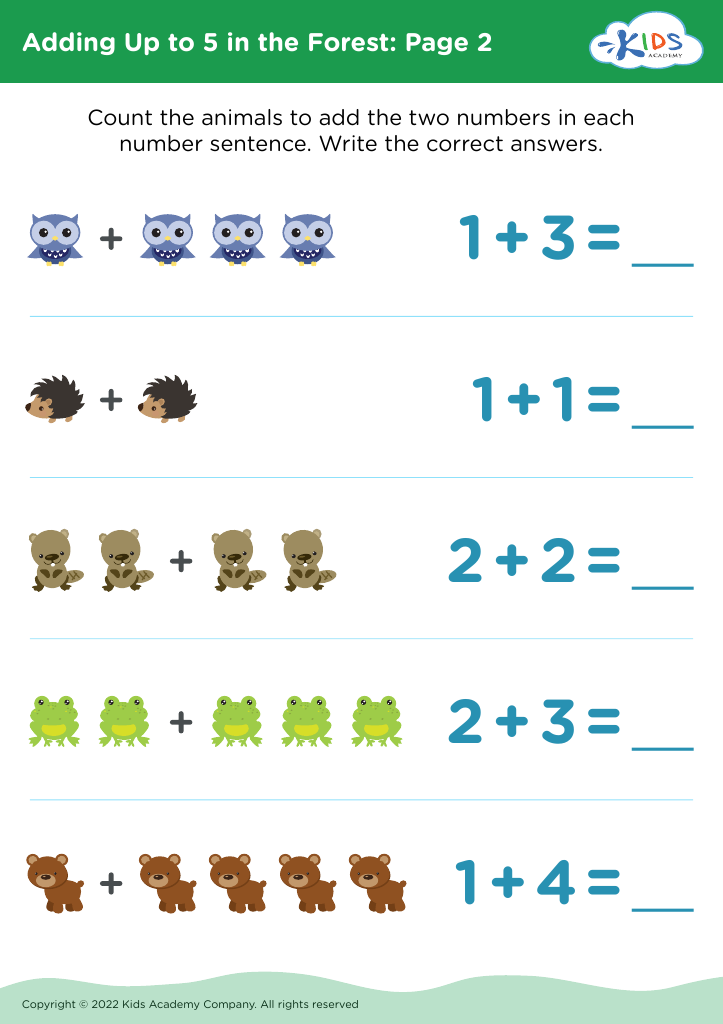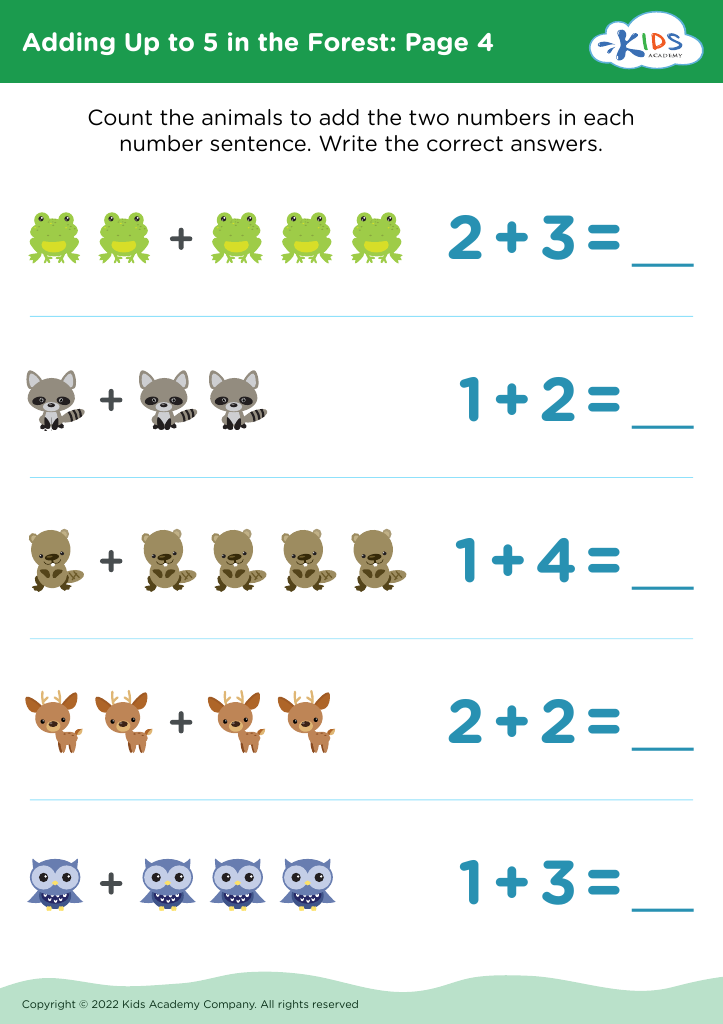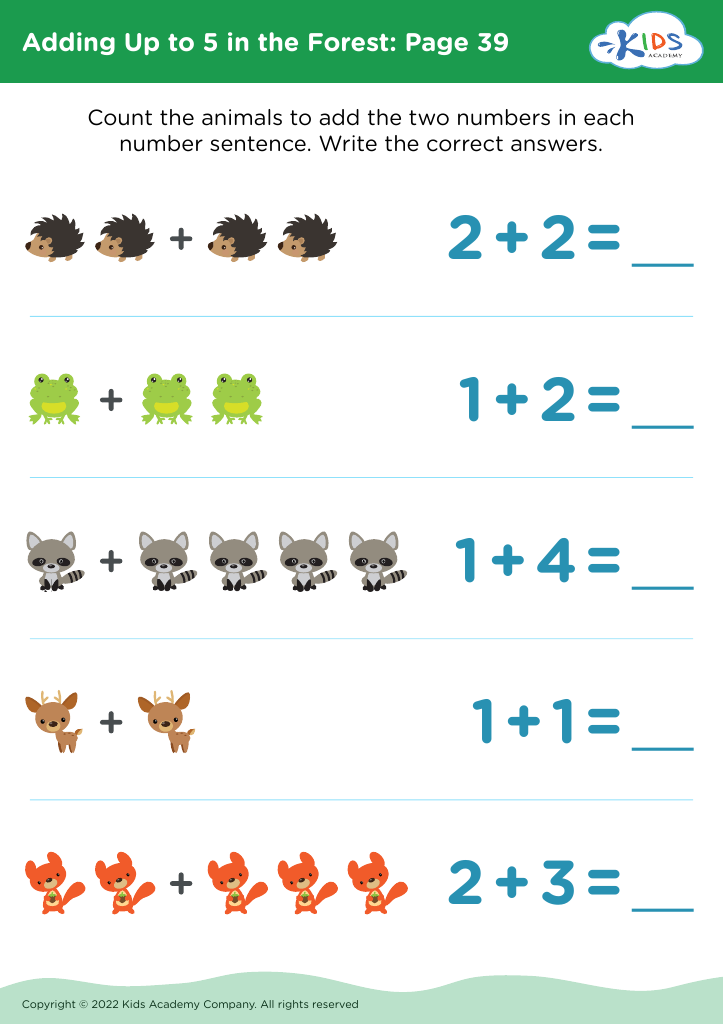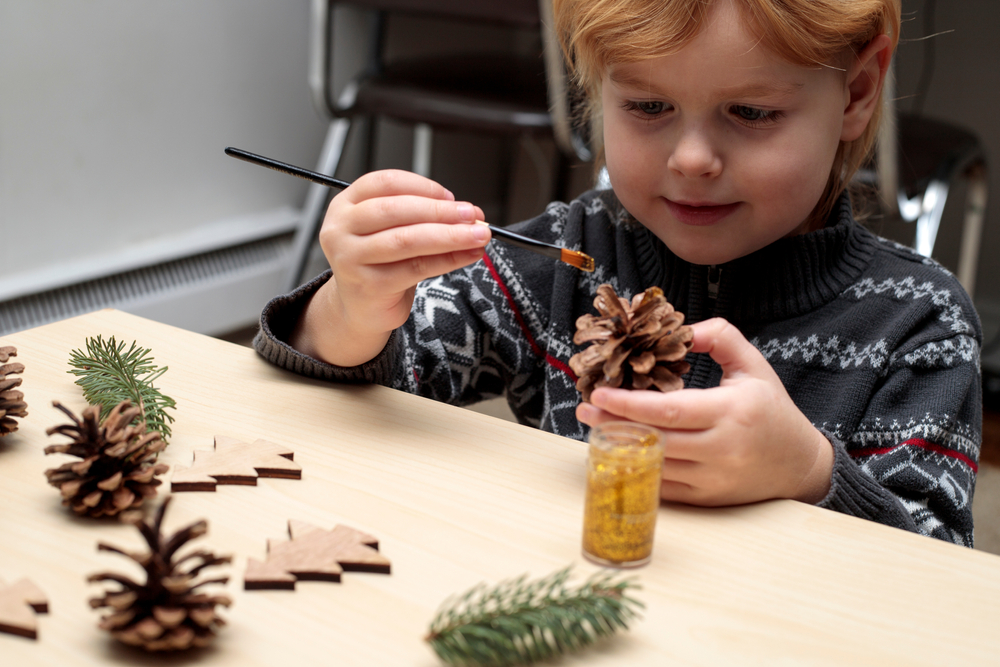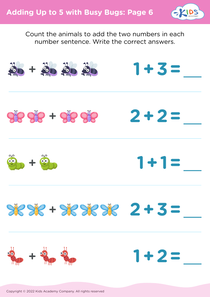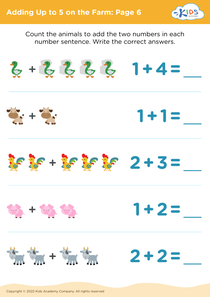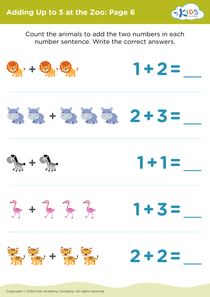Visual perception Adding in the Forest Worksheets for Ages 5-6
4 filtered results
-
From - To
Explore our "Visual Perception Adding in the Forest Worksheets" designed for children aged 5-6! These engaging worksheets enhance young learners' number sense while promoting visual perception skills necessary for mathematics. Featuring colorful forest-themed illustrations, kids will embark on a fun journey as they solve addition problems involving playful animals and natural elements. Each activity encourages kids to visualize numbers, count objects, and apply addition in a delightful setting. Ideal for classroom use or at-home learning, these worksheets ensure a captivating educational experience that nurtures critical math skills in early learners. Download now and watch your child's confidence grow as they add with joy!
Visual perception is crucial for a child's development, especially in early education for ages 5-6. It refers to the ability to interpret and make sense of visual information, which is essential for numerous skills, including reading, writing, and problem-solving. Parents and teachers should prioritize visual perception activities, like the "Adding in the Forest" game, as it enhances children’s cognitive abilities while making learning fun and engaging.
In "Adding in the Forest," children can develop skills in recognizing numbers and understanding basic math concepts through interactive visual stimuli. This playful approach forms connections between math and real-world elements, promoting critical thinking and concentration. Additionally, enhancing visual perception helps children with spatial awareness, necessary for tasks such as navigation and coordination in both academic settings and daily life.
By fostering visual perception, parents and teachers lay a solid foundation for future learning. Children who have a strong grasp of visual information not only excel academically but also build confidence in their abilities. This crucial skill translates into better comprehension and creativity, making learning more enriching and accessible. Supporting activities that develop visual perception ensures that children become well-rounded learners prepared to tackle more complex challenges in the years ahead.
